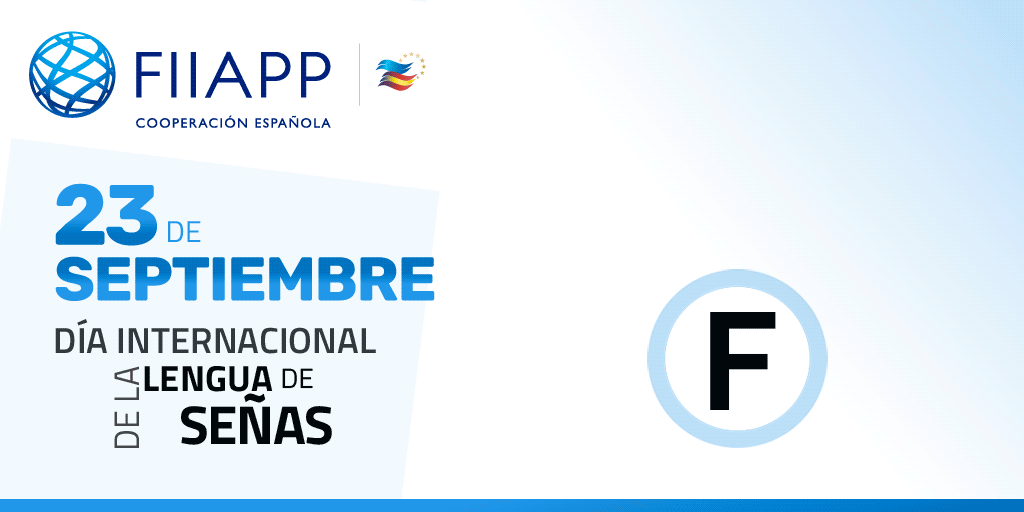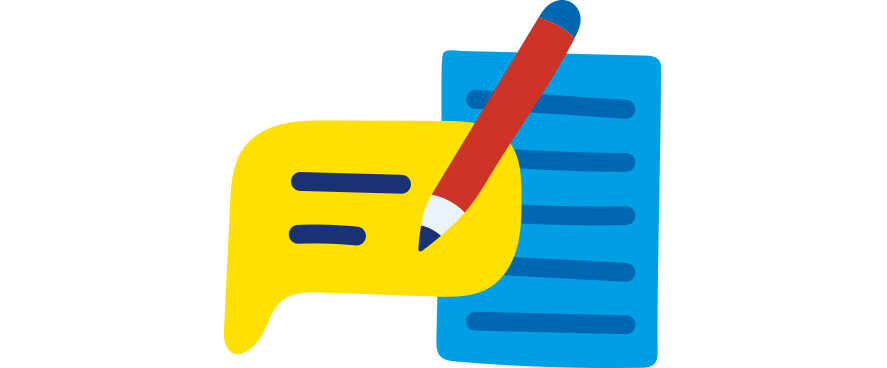-
26 September 2019
Category : Reportage
Sign language, an inclusion tool for people with disabilities
Since 2018, International Sign Language Day has been commemorated on September 23 and we at FIIAPP wish to join this celebration by showing the current situation of deaf people and how this disability and sign language have been welcomed by states and society

According to the World Health Organization (WHO), “466 million people worldwide suffer from disabling hearing loss, 34 million of them children.” Disabling hearing loss is understood to be a hearing loss greater than 40 dB in the better hearing ear in adults, and greater than 30 dB in the better hearing ear in children. In this regard, the WHO emphasises that the majority of people with disabling hearing loss live in low- and middle- income countries.
According to the World Federation of the Deaf, there are approximately 72 million deaf people worldwide. More than 80 percent live in developing countries and, collectively, they use more than 300 different sign languages.
Turning to specific figures, in the European Union, France is the country with the largest number of sign language users with 300,000, followed by Spain with 100,000 and the UK with 77,000.
The CNSE Foundation emphasises that the “deaf community forms a linguistic and sociocultural minority and sign language is the element of cohesion in this group”. But what do we mean by deaf community?: “With the term deaf community we refer to the social fabric formed by deaf people who use sign language and share experiences and goals. They are people with awareness of a common identity that maintain an individual commitment to the group, cooperating in one way or another with it,” says Amparo Minguet, vice president of the State Confederation of Deaf People (CNSE).
“Sign language was frowned upon; the educational system did not allow it to be learnt. Our group has been shackled – and I do not say it figuratively – throughout its history. But society, which in the past hid us away and was ashamed of our natural language, has changed,” acknowledged Luis J. Cañón, former president of the State Confederation of Deaf People.
Starting in the 70s, various groups of people reclaimed sign language and culture. Different scientific disciplines, through studies and research, ratify the existence of this language and its culture, thus giving importance to the preservation of its cultural values and traits.
The situation of sign language in different countries
Currently, there are eight states that officially recognise sign language in their constitutions. Other countries have opted for state recognition of sign language implicit in the development of legal rules and public policies, generally in education.
In 1988, the European Parliament unanimously approved a resolution asking all countries to recognise sign language.
In the case of Africa, countries such as Uganda, Kenya and South Africa have recognised it and provided the deaf community with the necessary resources for their inclusion.
Central America and Latin America for their part currently have integration policies for people with disabilities.
Also, New Zealand considers sign language as an official language, unlike Turkey, which has no official recognition of it.
International Sign Language Day
The United Nations General Assembly denotes September 23 as International Sign Language Day. This international day was observed for the first time in 2018, when the Assembly established that “early access to sign language and to services in this language, including quality education in that language, is vital for the growth and development of the deaf and critical for the achievement of the sustainable development goals.”
The Assembly also emphasises the importance of considering and applying, focusing on the issue at hand, the principle of “nothing about us without us.”
The World Federation of the Deaf (WFD), consisting of 135 national associations of the deaf as representatives of approximately 70 million deaf people worldwide, was responsible for proposing that International Sign Language Day be held on September 23. This date was chosen in order to commemorate the establishment of the WFD in 1951 in Rome.
Convention on the Rights of Persons with Disabilities
The Convention on the Rights of Persons with Disabilities (CRPD) is a United Nations international human rights instrument designed to protect the rights and dignity of persons with disabilities. This is the first human rights convention open to signing by regional integration organisations in which a paradigm shift in attitudes and approaches to people with disabilities is established.
2030 Agenda and the SDGs
The fundamental principle of the sustainable development goals (SDGs), agreed in the 2030 Agenda, is ‘leaving no one behind’. In this sense, a new model has begun to be developed that takes into account the diversity of abilities in society, focusing on women and girls with disabilities, since they are at greatest risk of vulnerability and social exclusion. As highlighted by the Spanish Committee of Representatives of People with Disabilities, CERMI, there is increasing debate on such matters as “the relationship between disability and poverty, the contribution that people with disabilities can make to the rest of society, the relationship between disability and technological development, and others.”
Both society and institutions must come together to convey the needs of people with disabilities to improve their current situation. In this sense, international cooperation plays an important role in carrying it out, since it is a primary tool so that governments give visibility to this sector of society.
SDG 5 on gender equality, SDG 4 focused on quality and inclusive education, SDG 8 on decent work and SDG 10 on reduced inequalities are closely related to the importance of inclusion of people with disabilities. Likewise, if we talk about inclusion, we must highlight SDG 11, on sustainable cities and communities, in which the concept of universal accessibility must be integrated when making essential infrastructures in basic health services.
Bridging the Gap
FIIAPP manages the project Bridging The Gap, funded by the European Union, the objective of which is to reduce the social exclusion of people with disabilities in middle- and low-income countries in Africa and Latin America. The beneficiary countries of this project are Ecuador, Paraguay, Burkina Faso and Ethiopia.
According to the permanent secretary of the National Multisectoral Committee for the Protection and Promotion of Persons with Disabilities in Africa, Boukary Savadogo, at the annual event held by Bridging the Gap in November 2018 in Madrid: “in Burkina Faso people with disabilities are not welcome”, but to improve this situation, this country “is aligned with the SDGs and the 2030 Agenda”.
Bridging the Gap also contributes to the commitment to encourage and promote the social, economic and political inclusion of all people, the aim of the tenth Sustainable Development Goal.
The views and opinions expressed in this blog are the sole responsibility of the person who write them.




